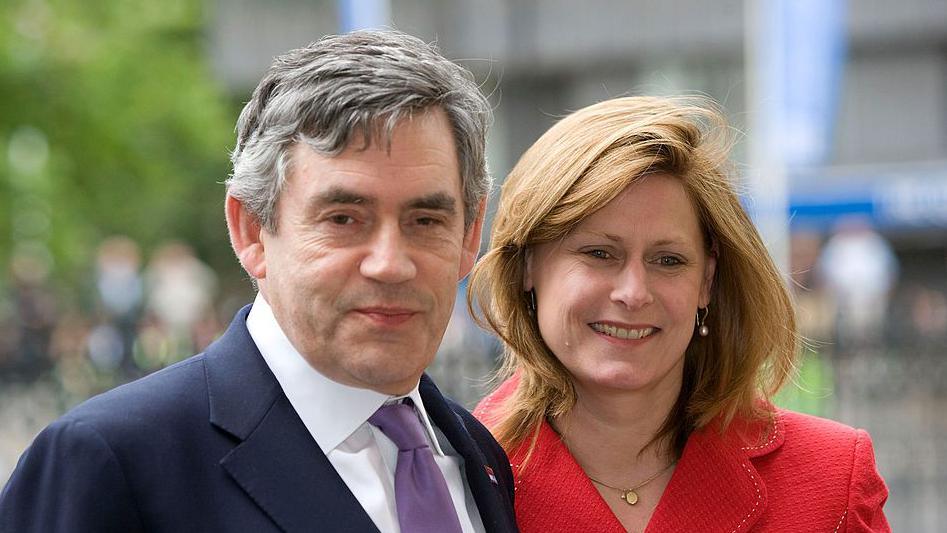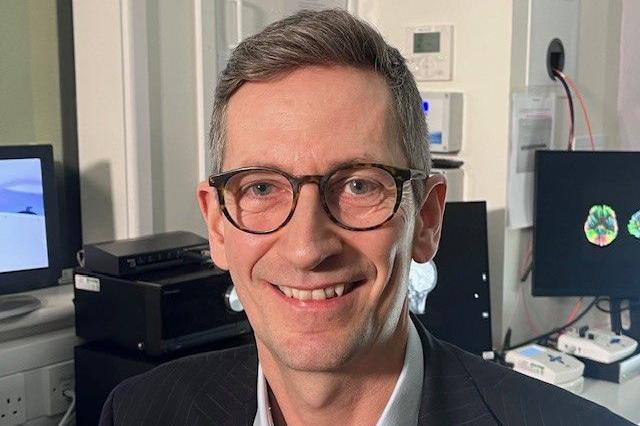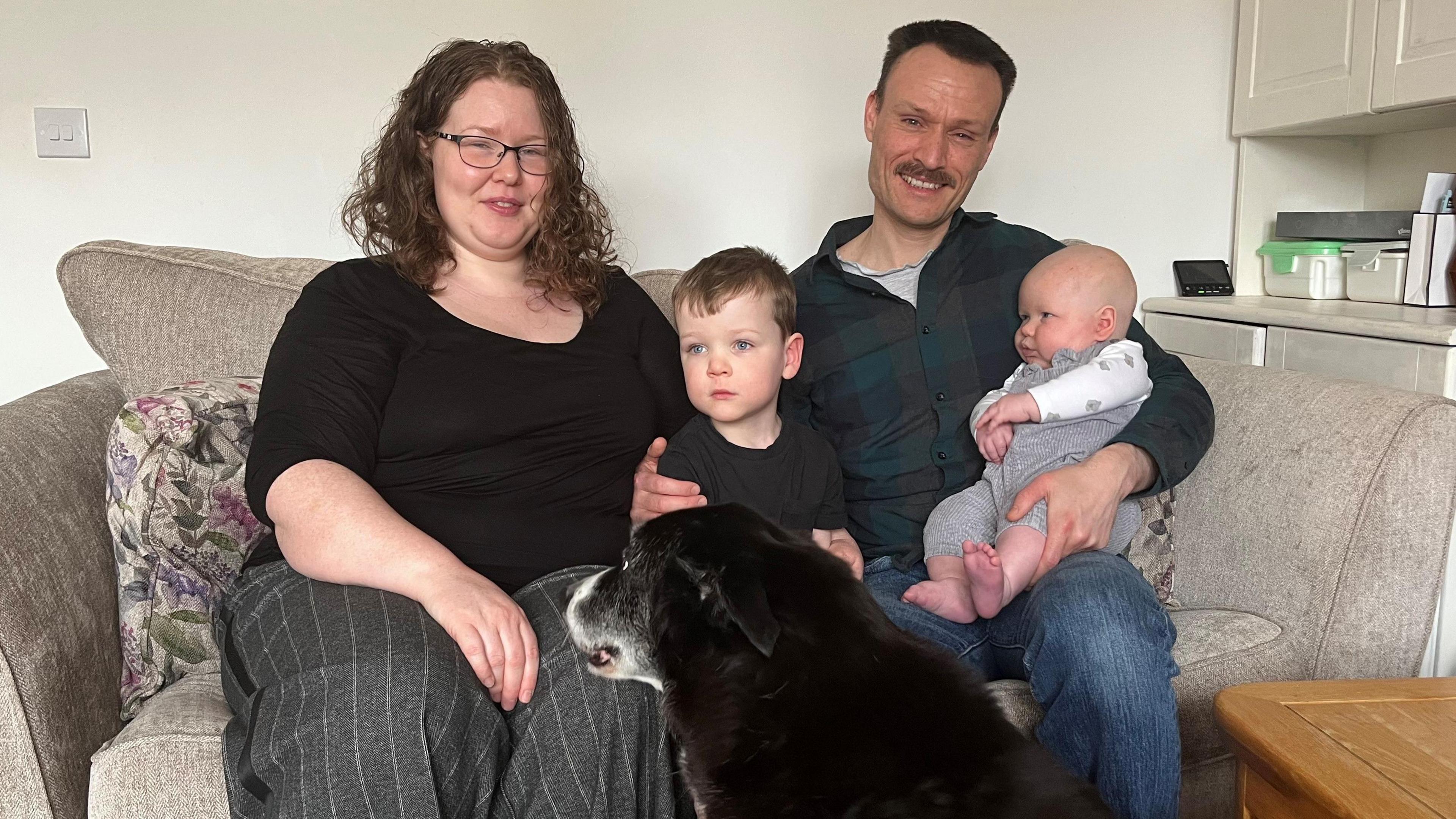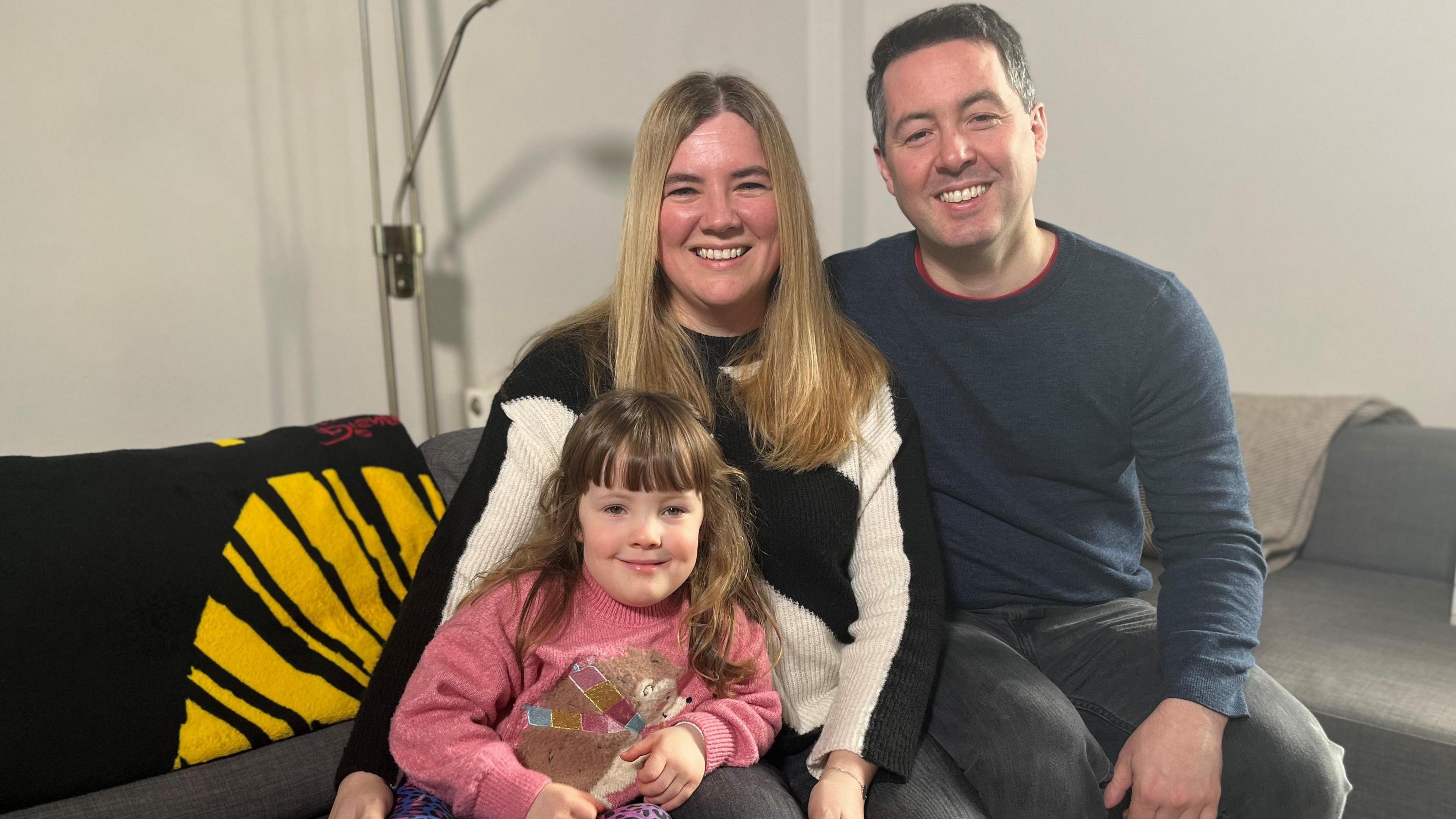Sarah Brown: We lost our daughter. Now we're helping other premature babies

Gordon and Sarah Brown set up the Jennifer Brown Research Laboratory in 2004, in memory of their daughter
- Published
When Sarah and Gordon Brown's daughter Jennifer died days after her birth in January 2002 there was an outpouring of support from the public.
The former prime minister was chancellor of the exchequer at the time and the couple's high profile loss struck a chord with people who had experienced similar tragedy.
"For Gordon and I, losing Jennifer was the greatest loss and it's one that stays with us," Sarah tells BBC Scotland News. "That doesn't change."
The couple wanted to understand what had happened but doctors couldn't offer an answer.
Among the 13,000 letters of support were many from people with similar stories.
Sarah says she wanted to do more to look into the causes and consequences of premature birth.
"What I realised was that there was more we needed to understand, that I didn't have answers for what had happened and so many other families didn't either," she says.
Sarah Brown wanted to look into the causes and consequences of premature birth
The couple set up the Jennifer Brown Research Laboratory in 2004, in memory of their daughter, who died just 10 days after she was born, seven weeks premature.
For the past decade, the Theirworld Edinburgh Birth Cohort has been a key part of the research laboratory's work.
It is recording the progress of 400 children from birth to adulthood and aims to provide insights into the long-term effects of premature birth on the developing brain.
Preterm birth – when a child is born before 37 weeks – is the single biggest cause of death and disability among newborn babies and is a leading cause of impaired brain development in childhood.
Sarah says the study is learning more about how the body reacts, how nutrition and sleep can help, and the impact of maternal care.
She says it has also shown the "stark realities" of the impact of poverty.

Prof James Boardman's team is examining how premature birth affects brain development
Prof James Boardman, from the University of Edinburgh, is the cohort's chief investigator.
His team uses a series of brain scans and psychological studies at various ages.
"We have decided to study in great detail the hows and whys of why premature birth affects the developing brain," he says.
"We think it's crucial to understand the hows in order to develop new treatments and new ways of supporting that group of children."
He says one of the key findings so far is that poverty has an impact on brain development.
"It would be fair to say that a baby born at full term to a more deprived couple has a similar sort of risk of developing some developmental difficulties as a baby born at 25 weeks into a well-to-do family," Prof Boardman says.
There are 400 families taking part in the study – 300 of them with preterm babies, the rest full-term births.

Elliot was in hospital for four months after his premature birth
The McPhees from Edinburgh say they jumped at the chance to help.
Elliot, now four, made his entrance into the world early at just 25 weeks.
His mum, Robyn, 38, says: "He was extremely early. You imagine the worst – you get handed this piece of paper with the weeks and their survivability and things like that.
"I was in hospital for five nights before he came along. And he was in there for four months – until a month past his due date, with all sorts of complications."
Elliot had to return to hospital a number of times due to the impact of a chronic lung disease - but Robyn says he has been doing really well.
"I feel proudness for him... he's overcome so much in his little life."
The family had signed up to the study before Elliot was born.
"There was just a moment when I thought about all the mums that had been in preterm labour and all the babies born premature that had been in studies in the past and everything they had discovered to give my child the best chance at life," she says.
"My own background is in science and I know how important these studies are, and to me it made sense. Why shouldn't I include my child to help give a future preterm baby the best chance at life?"

Lili is one of the children taking part in the study
Lili, who is also now aged four, was born 16 weeks early and weighted just 1lb 6oz.
Her mum Delyth Hughes, from Edinburgh, said: "We realised Lili was doing well because of all the other families who had taken part in studies.
"Taking part is the best decision we've ever made."
Lili's dad, Marc Armstrong, said: "Every time we look at Lili and think about how lucky we are that she has come on the way she has we just hope they can do that for more people and for babies born even earlier, potentially."
Sarah Brown believes the research is just the beginning of a journey that has the potential to change the prospects of many children.
"I would go back to the beginning and have it all change and not end the way it did for me, but I know that what it's done has opened up other horizons," she says.
"I would love to think that other families can avoid that loss, or if they have a baby that's born prematurely and more vulnerable, or coming out of circumstances that are much more precarious, that there'll be a better way to track that future and to open it up and to be able to be much more predictive about what we can do."
'They've given us our daughter'
- Published2 March 2017
Premature babies' care study launched
- Published16 November 2015

Get our flagship newsletter with all the headlines you need to start the day. Sign up here.